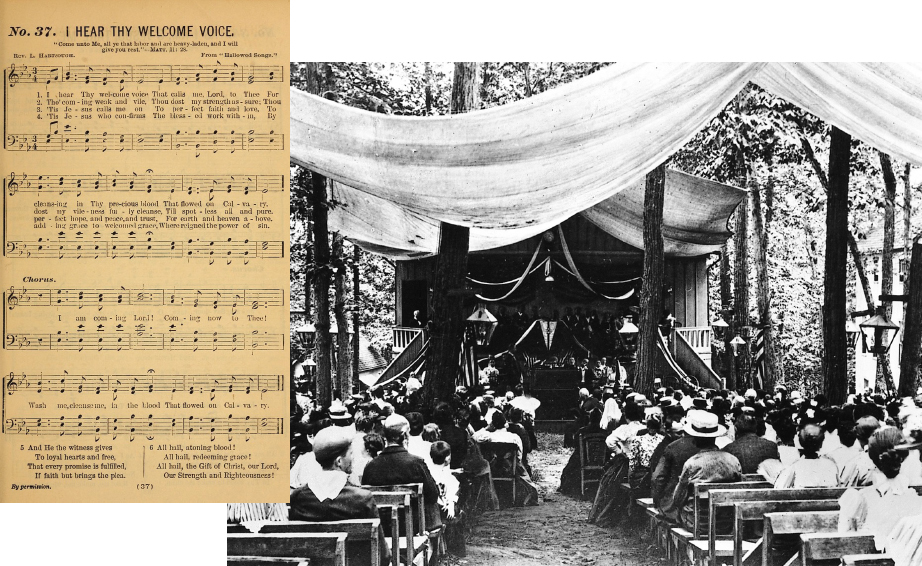Charles Ives, Second Orchestral Set, second movement, “The Rockstrewn Hills Join in the People’s Outdoor Meeting” (1909)
This orchestral piece is the second of three that make up Ives’s Second Orchestral Set. Ives wrote four symphonies; if his orchestral sets are thought of as (very) informal examples of the same genre, this movement would count as the scherzo. For all its obscurity, the title has a true Ivesian ring: The grandeur of nature joins a human festival, apparently some sort of revival meeting.
The piece begins with several false starts, as though any effort to formulate a melody is bound to be defeated by other sounds, rhythms, and bits of tunes coming from this way and that. A dance fragment, first in the strings, then in the woodwinds, is interrupted by snatches of brass band music and piano ragtime. The hubbub gets more and more dissonant and atonal.
Gradually this array of “sound bites” builds up to a passage of forceful irregular rhythms. We catch a fragment of a cakewalk, a ragtime dance of the 1890s. At the climax, the confused juxtaposition of various ideas gives way for just a moment to homophony; the irregular pounding rhythms here remind us of Stravinsky’s The Rite of Spring — a work written four years after Ives wrote this one. There is a slowdown and a quiet pause.
A new section begins with a fragmentary march in the trombones. Then at last a phrase of a hymn tune begins to crystallize. Only at the fourth try does the melody become clear. “I am coming, Lord!,” the rousing chorus from one of Ives’s favorite hymns, is orchestrated like a march:


After this collapses, the piano can be heard playing four-
